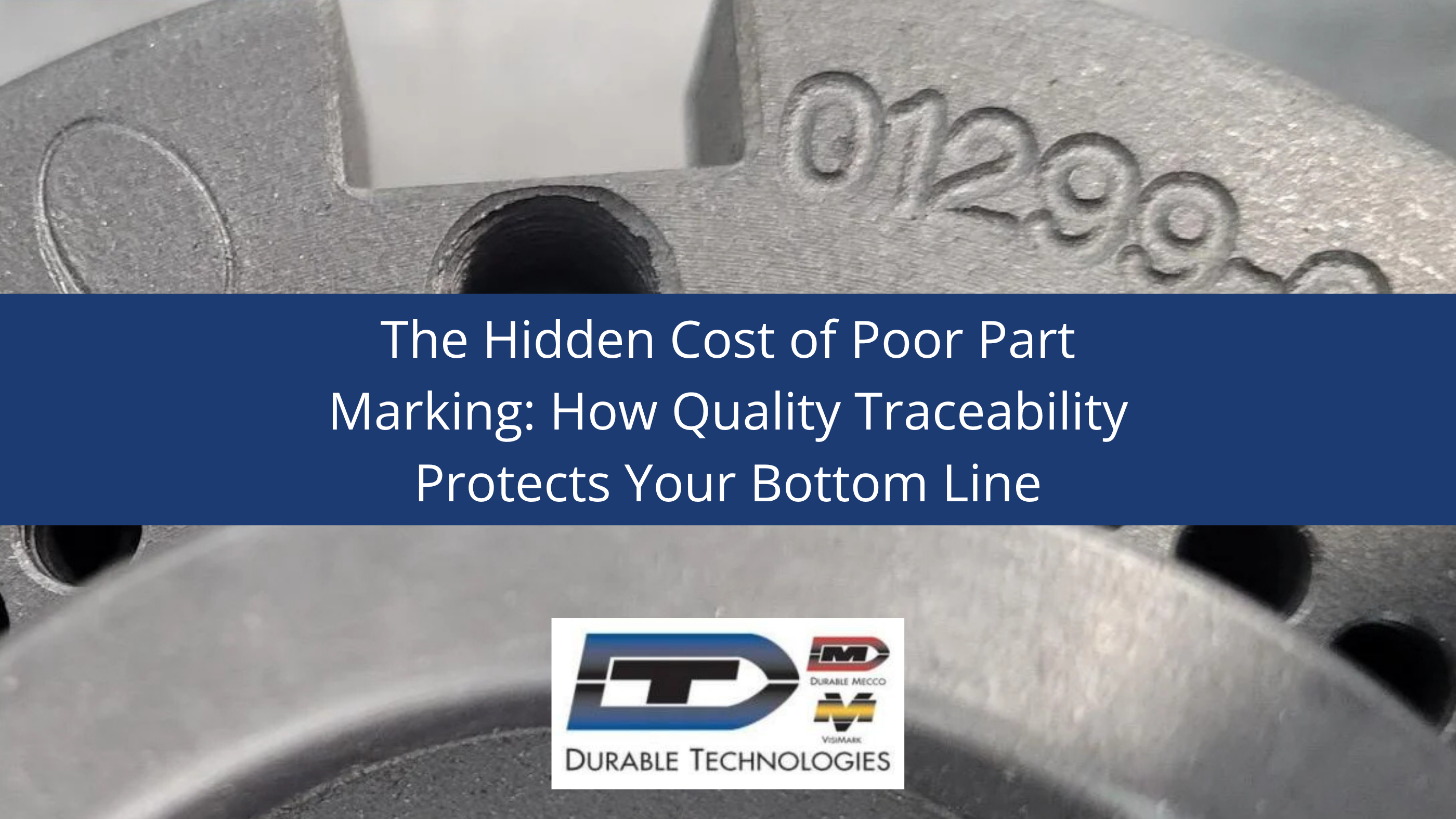3 min read
The Hidden Cost of Poor Part Marking: How Quality Traceability Protects Your Bottom Line
Matt Martin
Tue, Aug 26, 2025 @ 08:08 AM

Your quality audit is tomorrow. The FDA inspector pulls a random sample from your latest production run and asks to see the complete traceability record. Are you able to trace that part back through every step of the manufacturing process? More importantly, can you prove the marking process didn't compromise the part's structural integrity?
For quality managers in aerospace, automotive, and medical device manufacturing, these scenarios occur more frequently than anyone would like to admit. The difference between passing and failing frequently comes down to one thing: reliable part marking that meets regulatory requirements without breaking your budget or your delivery schedule.
When Marking Choices Have Real Consequences
Medical device recalls happen for many reasons but marking-related failures are more common than most quality managers realize. Sharp-faced character stamps can create stress concentrations in critical components, potentially leading to part failure.
The aerospace industry learned this lesson years ago, which is why many specifications now require low-stress marking methods for safety-critical components. Automotive suppliers face similar challenges when standard marking methods compromise part integrity in high-vibration applications. The solution exists, but finding suppliers who understand these requirements and deliver consistently remains a challenge.
Material Hardness and Marking Strategy
Your marking method must match your material's properties, not the other way around. Soft aluminum accepts standard sharp-face characters with minimal stress, while hardened steel components require careful consideration of both marking force and character style.
Low-stress marking becomes essential when dealing with components that undergo cyclic loading or operate in high-vibration environments. Aerospace applications frequently specify low-stress round or dot characters to maintain fatigue life. Medical devices often require the same approach to prevent crack initiation sites.
The marking depth requirements vary just as dramatically. Soft materials like brass may only need 0.003" depth for permanent marking, while stainless steel components might require 0.010" or deeper to survive years of handling and processing.
Finding Dependable Part Marking Suppliers
Quality managers know the frustration of collaborating with suppliers who promise everything and deliver inconsistency at best. You need marking tools that perform the same way every time, delivered when promised, at a price that doesn't force you to compromise on quality.
The best marking tool suppliers understand your regulatory environment. They're able to provide a variety of character options because they've worked with aerospace customers who learned the hard way about fatigue failures. They maintain reasonable lead times because they understand that production schedules don't wait for late deliveries.
More importantly, they stand behind their products with consistent quality and responsive customer service. When you call with a marking issue, you reach someone who understands your application, not a call center that reads from a script.
Quality Traceability and Audit Protection
Auditors focus on three key areas when examining your traceability system: completeness, legibility, and process control. Your marking method directly impacts all three.
Complete traceability requires marks that survive your entire manufacturing process. A part number that's legible after stamping but disappears during heat treatment or surface finishing creates a traceability gap that auditors will find.
Legibility standards vary by industry, but the principle remains constant. Characters must remain readable throughout the part's service life. This means considering not just initial mark quality, but how the mark performs under environmental exposure, wear, and handling.
Process control documentation becomes straightforward when you collaborate with suppliers who provide detailed specifications for their marking tools. Quality suppliers provide this information upfront, not after problems arise.
Cost-Benefit Analysis of Quality Marking
A quality marking process also reduces inspection time. Clear, consistent marks are easier to read and verify, which speeds up your quality control process. When every character looks the same across production batches, your inspectors work faster and make fewer errors.
The time savings compound during audits. When inspectors can easily read and verify your part markings, they spend less time questioning your traceability system and more time examining other areas. Smooth audits mean faster approvals and fewer follow-up visits.
Building Strategic Supplier Partnerships
The most successful quality managers build relationships with suppliers who understand their challenges. They work with marking tool manufacturers who are able to provide all of the character style options, maintain reasonable lead times, offer competitive pricing, and provide technical support when needed.
These partnerships pay dividends when urgent needs arise. When new regulations change your requirements, you need technical support that helps you select the right solution quickly.
The best suppliers also help you plan. They monitor your usage patterns and recommend inventory levels that prevent stockouts without tying up excessive capital. They notify you about lead time changes before they affect your production schedule.
Your marking system is only as dependable as your supplier relationship. Choose partners who deliver quality tools on time, at fair prices, and possess the technical expertise to support your specific applications. Your audit results and your bottom line both depend on it.




